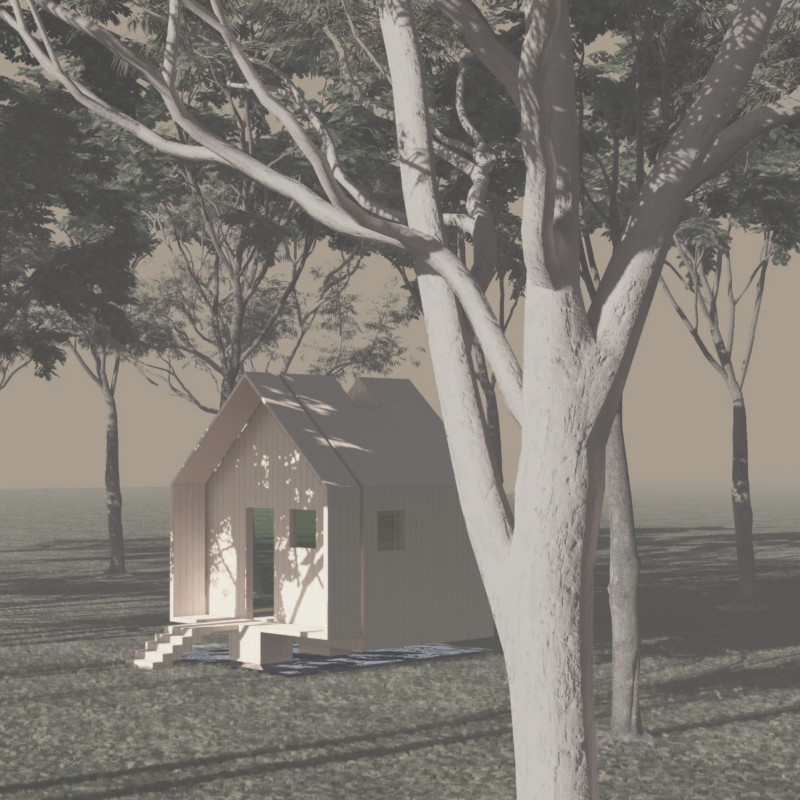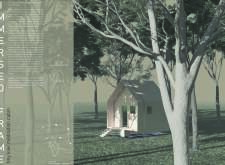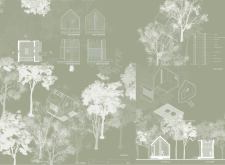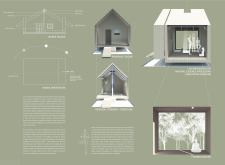5 key facts about this project
Set in the calm landscape of New Zealand, the meditation space serves both a functional and cultural role. It is designed to encourage mindfulness and reflection, while also paying homage to traditional Māori architecture. By drawing from the form and spirit of the Māori marae, the structure creates an inviting environment that aligns with nature. The combination of these elements enhances the overall experience for those seeking tranquility.
Spatial Configuration
The layout of the meditation space takes inspiration from the marae, which is known as a gathering place for the community. The design uses the idea of a skeleton, with the ‘head’ positioned above and inviting posts on the sides. This configuration provides a warm and welcoming atmosphere, promoting a sense of togetherness and inner peace for its users.
Materiality
Timber is central to the design, chosen for its warm and natural qualities. The exposed timber ceiling highlights the building's structural features and symbolizes the safety and strength of the human body. This selection emphasizes a connection with the surrounding environment, encouraging visitors to feel grounded and at ease within the space.
Light and Interaction with Nature
Natural light plays an important role in the meditation experience. A square window on the northern facade allows daylight and fresh air to enter, while the southern facade features a semi-open platform that frames beautiful views of the surrounding trees. These design choices help bridge the interior and exterior, allowing participants to feel closer to nature and enhancing their sense of calm.
Central Features
One key element of the interior is a central altar, which functions as the heart of the space. This altar can be lowered for processing flower essences, symbolizing a connection to deeper spiritual practices. When not in use, the glass altar lifts to the ceiling, allowing sunlight to illuminate the area and create soothing patterns. This design detail draws attention and encourages moments of reflection.
Overall, the incorporation of water elements enriches the meditative experience, enhancing sensory engagement. The flow of light and water, combined with views of the natural landscape, creates a calming environment where users can focus on personal introspection.





















































